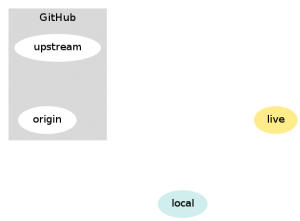 In October, I’ll be delivering a tutorial at the mighty PHPNW Conference which contains very little PHP. Why? Because I think, as developers, it’s our other professional skills that suffer. As a consultant, I work with lots of different teams, and it is very rare for code to be the problem (and the one time it was, it wasn’t the only problem!).
In October, I’ll be delivering a tutorial at the mighty PHPNW Conference which contains very little PHP. Why? Because I think, as developers, it’s our other professional skills that suffer. As a consultant, I work with lots of different teams, and it is very rare for code to be the problem (and the one time it was, it wasn’t the only problem!).
In web development, our biggest challenges are not writing code, we can do that. But getting the code safely from one place to another, with many people’s work preserved, having our platform(s) correctly configured and understanding how to use them, making use of the tools in the ecosystem which will help us improve the quality of our code; these are the big challenges we face, and that’s why I proposed this workshop and why I think all these topics are important. Continue reading


